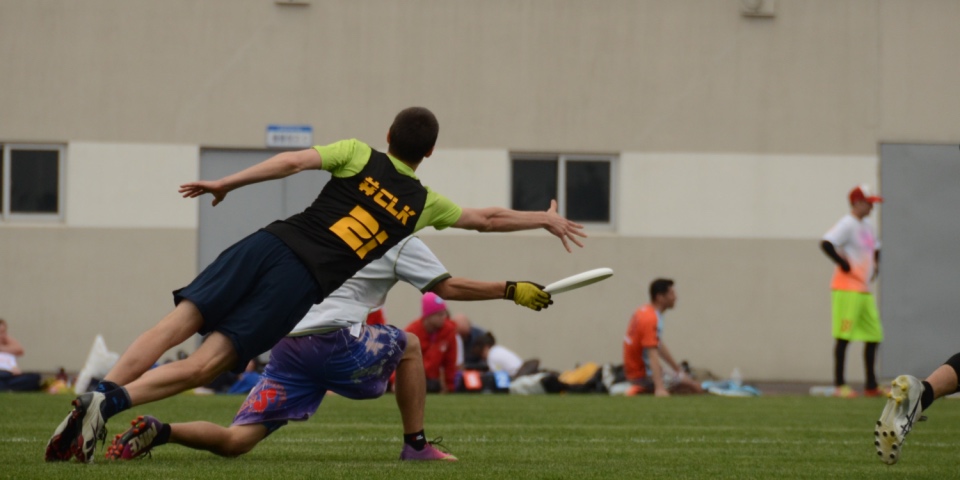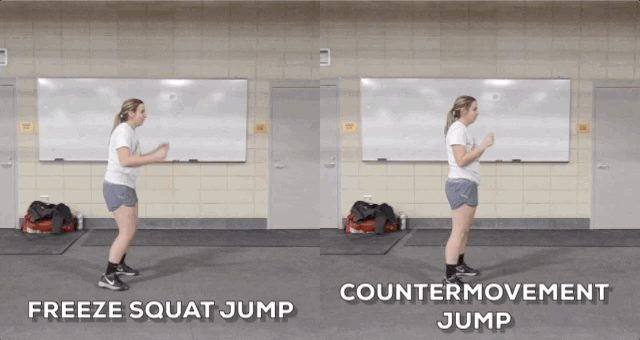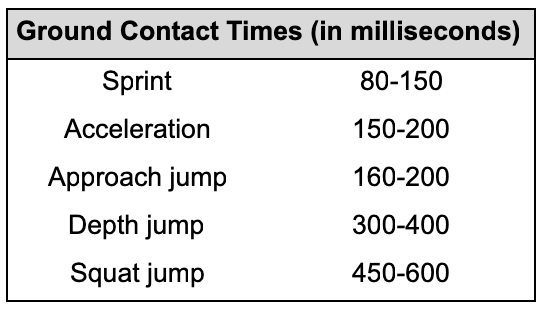
Part 1: A Primer
Plyometrics might be the most misunderstood and misused exercise concept in the health and fitness industry. Much of the information is ineffective at best, and unsafe at worst. Trainers like Ren Caldwell and Melissa Witmer continue to create some good resources for adding plyometric exercises into your own workouts, but we’re still missing the What, Why, and How to enable you to program plyometric workouts for your team.
Our plyos discussion is split into two parts. The first will be explaining what plyometrics are (and aren’t), and why to use them. The second will be how to apply them in your workouts. This is nothing new, nothing groundbreaking. It’s simply a collection of the available research in a slightly more condensed and convenient package. If you already have a good grasp of the physiology, then skip ahead to the next article.
What they are
In short, plyometrics are the utilization of the springy parts of your kinetic chain in order to create more force more quickly than simply contracting your muscles voluntarily. For example: if you are already in a half squat position before jumping, you’re simply contracting your muscles to put force in the ground and propel yourself upward. If you lower yourself quickly to that position and allow gravity to stretch your muscles and tendons, then capture that stretch to jump back up, you’re performing a counter-movement jump, which is a basic plyometric movement.
There are two actions occurring in your body to comprise that springy response. Both of them combine to form the stretch-shortening cycle (SSC). The first is the natural elasticity in your muscles and the tendons connecting those muscles to your bones. Just like a rubber band, a stretched muscle will store energy to contract on itself as it tries to regain its shape. Unlike a rubber band, this energy is dissipated rapidly and will not spring back if it’s held for more than a few fractions of a second. Let’s use the gastrocnemius as an example. As you bend your ankle during a crouch, that large muscle in your calf will be stretched and briefly store energy. As you rise to jump, the muscle will “snap back”, or contract more rapidly than if it were not stretched initially.
The other part of our SSC is how we use proprioceptors in our muscles, specifically our muscle spindles. The muscle spindle is slightly more complicated, and we need to understand how our muscles work to understand how the muscle spindle affects them. Whenever we contract a muscle, we send a signal to our muscle, and it will activate the minimum amount of motor units required to do the job. As we add weight and contract more quickly, our muscles learn to default to using more motor units, which results in a more powerful contraction. When a muscle is suddenly stretched (as it would be during the eccentric or lowering portion of a jump), the muscle spindle inside of it sends a message to the spine. The spine returns a message to the muscle that activates even more motor units. This action is called the myotatic reflex. Essentially, the shock that the muscles receives from a sudden stretch activates a greater amount of motor units than from a static position.
The elasticity in our tendons and the myotatic reflex work in tandem to create a more powerful response than we could get from a static position. Compare the freeze squat jump and the countermovement jump. When you multiply the effects of the SSC on all of the muscles involved in a jump, they can send you over 10% higher than a paused jump.

The freeze and paused squat jumps eliminate the contribution of the SSC
What they aren’t
“Plyometrics” is not a catch-all term for that warm-up you do in the end zone before your practices and games. Some of the exercises may have plyometric components (like skips or bounds), but most don’t. A better term would be “dynamic warm-up”. Of course, it’s just a semantic issue, but being precise with our language helps us understand what we’re doing and communicate with others.
Plyometrics are not for conditioning or endurance. They are high-intensity, full effort exercises. Since we’re trying to recruit as much of our muscle as possible, we need to be rested between each repetition. If we are trying to train our body to recruit a maximum amount of motor units, but we’ve exhausted those units, we are training energy conservation instead of power. Working at 80% of your max will not do much to increase what you can do at 100%. Additionally, plyometrics put a lot of stress on your joints, and if your stabilizing muscles are too tired to align your joints, you put yourself at risk of injury. Plyometrics should never be used as a conditioning exercise.
Plyometrics are not a silver bullet for athletic performance. They’re only one ingredient in the athletic cake. If you are weak in this area you might have a lot of room to improve quickly. If you’re already naturally gifted, you may see better results from a strength training program.
Why we train them
The big question behind every exercise is “how does this transfer to my sport?” Nearly all sport movements, especially those in ultimate, are dynamic. When we run and jump, every step absorbs force and exerts it back into the ground to propel us forward. This typically happens between 0.2-0.5 seconds. Compare that to a weighted squat. Even if you load only 30% of the maximum weight you can lift (generally agreed upon as the ideal load for training power), an elite athlete won’t lift it much faster than 0.7s. The direct transfer from squatting to running is limited[footnote number=1]“Direct transfer” is the key phrase. There is much to be gained from strength training, but that’s for another topic.[/footnote] Plyometrics, however, operate at a similar speed to what we see in sports.

Plyometrics are a complicated subject, and there’s likely something I got wrong or need to clarify. Include any questions in the comments, and I’ll try to respond. In Part 2 I’ll talk about how to use plyometrics in a safe and efficient way with your team.











Comments Policy: At Skyd, we value all legitimate contributions to the discussion of ultimate. However, please ensure your input is respectful. Hateful, slanderous, or disrespectful comments will be deleted. For grammatical, factual, and typographic errors, instead of leaving a comment, please e-mail our editors directly at editors [at] skydmagazine.com.